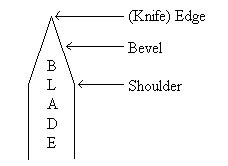What must be considered when choosing a knife?
When you are choosing a knife the following factors are important:
- stainless steel blade
- thickness of the blade
- length of the blade and of the knife
- shape of the blade
- type of handle.
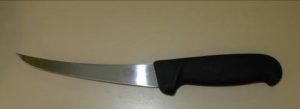
Boning Knife
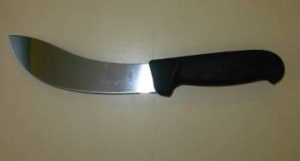
Skinning Knife
In general, a broader, heavier blade is better for most slaughter purposes, such as skinning, and a thinner, flexible blade is better for boning and slicing. Most knives have blades between 125 to 175 millimetres long. Shorter blades, when sharp, require less force to cut and may reduce repetitive strain injuries.
Some boning knives have a ring to prevent ‘run through’ cuts if the hand slips onto the blade. These knives are good for trimming but do pose a risk if used for boning.
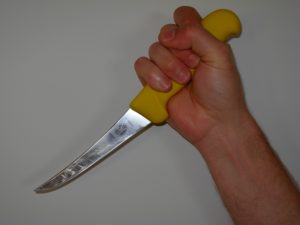
A typical boning grip. The choice of knife is dependent on its use.
What are the parts of a knife?
There are two sections to a knife – the handle and the cutting blade.
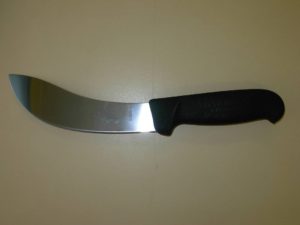
Parts of a knife:
- Butt of handle
- Heel
- Cutting blade
- Point
- Front end of nose
- Knife edge
The handle
The shape of the handle needs to be comfortable for you to grip. It must also provide some safety for you, as the heel of the handle prevents your hand from slipping over the blade or the blade coming back through your hand (commonly known as a ‘knife slip’).
Plastic-handled knives are easier to clean. However, they can be a safety hazard if fat builds up on the handle, because this can increase the chance of your hand slipping. You need to clean your knives regularly to prevent this from happening. Modern handles are made from a slip resistant surface but they still require regular cleaning.
The blade
Blades are made of stainless or carbon steel.
Different parts of the blade have different names, as shown below.
